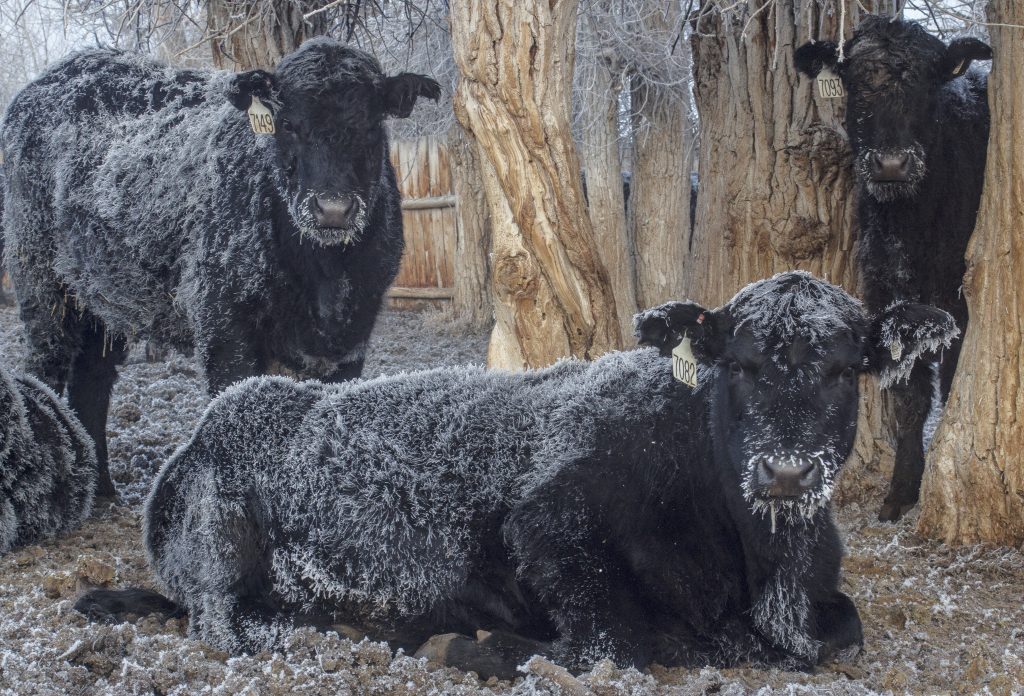Winter Herd Management: Producers need to keep several things in mind when managing the herd during winter

Those with spring-calving cows spend the winter months preparing their herds for calving, early milk production and the upcoming breeding season, while producers who calve in the fall are focused on maintaining their cows’ body condition so they can meet full lactation and breeding requirements.
While every cattle operation has their own unique needs, there are a few common management decisions which can increase profits during the winter months.
Monitoring body condition
Experts in the beef industry agree monitoring body condition score (BCS) of cattle in any operation is one of the most important things to keep in mind during winter months.
During the Wyoming Stock Growers Association’s Winter Roundup and Trade Show Dec. 7-9, Dr. Steve Paisley, Wyoming State Beef Extension specialist, discussed the importance of monitoring BCS.
“When monitoring BCS, we want to look at the shape of the top, spine appearance, cover through the brisket, over the ribs and in the flank,” Paisley explained, noting a moderate BCS of five or six on a scale of one through nine is ideal.
Paisley noted thin cows generally breed back later, produce lower colostrum and have lighter-weight calves, while cows with too much condition have low fertility, more difficulty calving, less milk production and lower efficiency.
Despite a cow’s current BCS, Paisley also noted it is important to make sure cows are never trying to calve or breed back on a decreasing plane of nutrition.
Testing forages
Another important management consideration industry experts suggest is to test the forage producers will be feeding their cattle during winter months.
“There is a tremendous range in hay quality depending on level of maturity, fertilization, growing conditions, harvest circumstances and storage methods,” states University of Nebraska-Lincoln (UNL) Extension Educator Aaron Berger, in a UNL Beefwatch newsletter titled “Test, Don’t Guess.”
He notes accurately sampling and testing hay is the only way to get a real understanding of the nutritive value of feed and whether the particular feed is adequate for meeting the nutrient requirements in a herd.
According to Berger, feedstuffs should be tested for moisture, protein, energy, minerals and nitrates.
Minimizing feed waste
One of the largest expenses for most cattle operations comes from storing and feeding forage during winter months, and several studies across the nation have shown losses over 20 percent may occur as a result of poor management and feed handling. Therefore, avoiding losses is key.
In the Beef Cattle Research Council’s Dec. 4 newsletter, Prince Edward Island Department of Agriculture Beef Specialist Dr. Les Halliday and Duane McCartney, retired forage-beef systems research scientist at Agric Canada discuss ways to reduce dry hay waste.
When storing hay, the two experts suggest arranging bales in such a way to allow sufficient air flow, therefore reducing moisture accumulation, which may lead to spoilage loss.
They also encourage producers to feed hay off of the ground in bunks or hay feeders. When doing this, they note it is important to ensure each animal has enough space at the feeder to reduce competition and minimize trampled feed loss.
Providing protection
Providing protection against cold temperatures and wind chill during winter months is also crucial.
According to South Dakota State University Extension, for every one degree below zero, a cow’s total digestible nutrient (TDN) requirement increases by one percent. Wind chill, moisture and lack of sunshine can also contribute to increased requirements.
While cattle should be eating more pounds of feed and/or consuming a diet with a greater energy density during these months, producers can also help the situation by providing shelter or windbreaks.
Controlling internal and external parasites
A fifth consideration for producers when it comes to managing cattle during cold winter temperatures is to control both internal and external parasites.
“Parasites are freeloaders that rob profit from cattle,” states Hubbard Feeds Field Beef Nutritionist Twig Marston in Progressive Cattle.
Marston explains lice are a major external parasite, which should be controlled throughout winter months since scratching and hair loss may result in decreased BCS and performance.
Additionally, he notes internal parasites decrease digestion and gut health.
“Lost income to parasite infestation has been estimated annually in the millions of dollars. Therefore, timely applications of parasite controls should be a priority item in every management plan,” Marston says.
Hannah Bugas is the editor of the Wyoming Livestock Roundup. Send comments on this article to roundup@wylr.net.





